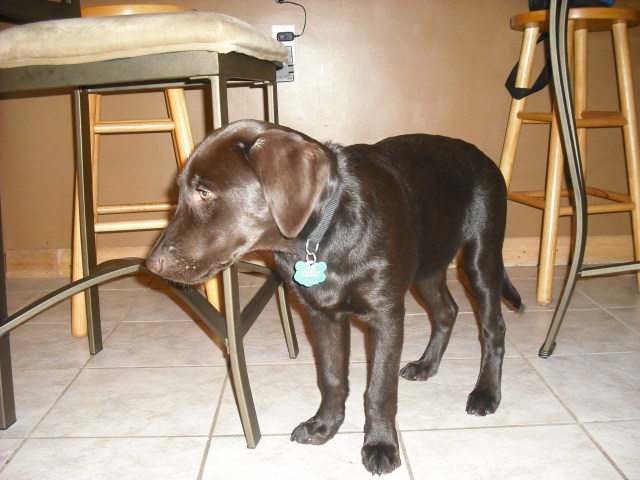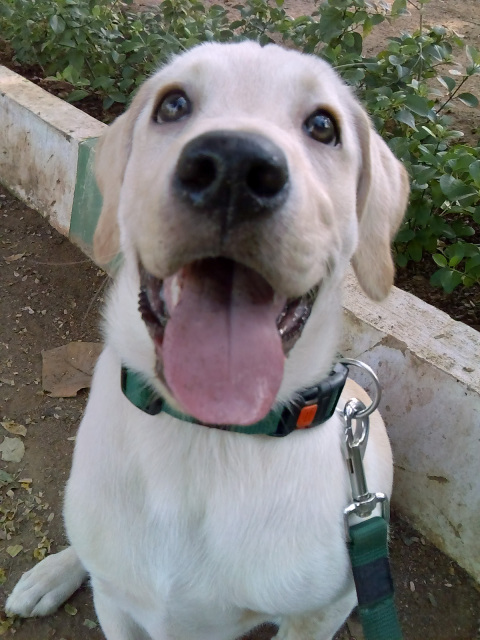Question
 buddy
buddy
We just adopted our second lab rescue. Our first is female now 8 years old and we've had her for 7 years. The new lab is male, 14 months and neutered. His behaviors are diff than what I am used to in females. Humps everything, rips with his teeth and feet. alternates between sleep and a kind of mania. grabbing clothes, beds, annoying the other dog, whining. some of this I know is anxiety and the newness. any hints to helping him settle. we just had to purchase a crate. our first to help with training.
Answerwithin any breed, behavior varies widely from one dog to the next. Much of it is due to breeding, training, and early socialization. If he was only recently neutered, he may settle down as the existing hormones wear off. The crate is a good first step, but mostly should be used when nobody is able to watch him. The key to most behavior problems is approaching things using the dog's natural instincts. Dogs see all the people and dogs in the household as a pack with each having their own rank in the pack and a top dog. Life is much easier if the 2 legged pack members outrank the 4 legged ones. You can learn to play the role of top dog by reading some books or going to a good obedience class. A good obedience class or book is about you being top dog, not about rewarding standard commands with a treat.
Some of this you won't be able to do because it is meant for younger dogs. ''Elevation for small puppies: Sit on the floor and gently put your hands around your pup's middle, below his front legs, and lift him up. He is facing you. Hold him for 15 seconds. Repeat until he no longer struggles. If he is past 10-12 weeks, lift his front feet off the ground, but don't pick him up.
Cradling for small puppies: Hold your puppy gently on his back, as you would cradle a small baby. If he struggles, hold him firmly until he quiets for 10-15 seconds. With larger pups, you can do this as your sit on the floor, with your pup between your legs.
Quiet lying down: Place your pup on the floor on his side, with all 4 legs pointing away from you. Use your hands on his neck/shoulder area and middle, to hold him in this position. When he is quiet, praise him. Lengthen the time that you keep him quietly in this position. When he accepts this position well, handle his paws and muzzle, while keeping him quiet.''
The quotes mean this isn't my original work. It is copied from my Puppy Raising Manual. I have long used these or minor variations of them, and they are very effective. You may want to give him a belly rub while he is on his back too. Helps bonding. There is a big difference between him rolling over and demanding a belly rub, and you choosing a time to roll him over and rub his belly. The latter cements your place as pack leader.
There are professional trainers that would take your money and say the solution is a 3 hours walk every day. If you don't follow their advice, it isn't their fault the problems continue. I doubt many people have time for that. I think more exercise will help. Do you have a fenced yard? Get out and play fetch. Check out the ''Chuck it'', a arm that allows you to throw a ball further.


 is my lab too small
Question
Reese
I have a 19 week old Male chocolate lab.
is my lab too small
Question
Reese
I have a 19 week old Male chocolate lab.
 Lab eating my house! (and everything else)
Question
Pepper
I have a sweet sweet black female lab t
Lab eating my house! (and everything else)
Question
Pepper
I have a sweet sweet black female lab t
 sniffing female owner
Question
Jack
Hello, thank you so much for taking the t
sniffing female owner
Question
Jack
Hello, thank you so much for taking the t
 labrador diet
Question
striker
i have a black male Labrador of 4 mont
labrador diet
Question
striker
i have a black male Labrador of 4 mont
 Hyper active Labrador Pupp.
Question
Benji
Hello Jen,
&nbs
Hyper active Labrador Pupp.
Question
Benji
Hello Jen,
&nbs